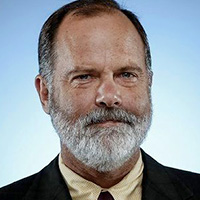“Men feared witches and burnt women.”
— Justice Louis Brandeis, concurring opinion, Whitney v. California, 1927
AMERICAN HISTORY — INDEED, WORLD history — is littered with the refuse of policies and actions born of fear that caused incalculable damage. Brandeis’ observation referred, of course, to the Salem witch trials, one of countless tragic examples. Fear of Japanese American involvement in Pearl Harbor gave us the imprisonment of 110,000 innocent men, women and children. Fear of communism gave us blacklists and betrayals. In California, fear of immigrants gave us Prop. 187, promoted by an infamous advertisement that featured shadowy figures darting across a road as a narrator intoned: “They keep coming.” More recently, fear of elites and economic dislocation gave us Donald Trump. And his cynical return to the fear of immigrants gave us the fictional benefits of a border wall and the reality of children held in cages.
When white supremacists marched in Charlottesville in 2017, they vented their fears in the flickering light of tiki torches, chanting: “Jews will not replace us!” Four years later, many of the same elements, goaded into believing that an election had been stolen from them, stormed the United States Capitol to prevent the U.S. Congress from seating the rightfully elected president.
Fear, even when it is understandable, can compound harm. Religious conservatives fear for the life of a fetus and for a society that tolerates what they view as murder — and then, when given license to act on those fears by the United States Supreme Court, legislate policies so draconian that they threaten the essence of personal and bodily autonomy. In the United States today, some states will prosecute a teenage girl for aborting a fetus conceived by forcible rape; other states will pay for the girl’s safe passage to an abortion clinic. Not since the days of slavery has fear, in this case emanating from the Supreme Court’s decision in June to overturn Roe v. Wade, led to starker policy contradictions than those unfolding today in abortion rights.
And yet, fear can have a constructive role as well. We avoid placing our hands on stovetops because we are properly afraid of being burned. We should welcome social policies that minimize harm — Social Security and Medicare are two programs that respond to fears of aging and illness. About climate change, we may not be fearful enough: Its incremental effects make it difficult for many people to appreciate just how alarming its consequences can be.
How, then, to assess the place of fear in public life? That is what this issue of Blueprint asks — and attempts, at least tentatively, to answer. We cannot expect an end to all fear; in fact, we often rely on it. But we also seek to recognize it and avoid policies that overreact to it, or that capitalize on it to demonize, to scapegoat, or to distract.
Fear will not be conquered by an issue of Blueprint. But as always, we hope that articles here will begin conversations and lead to considerations of how to recognize and manage fear in our public discourse. At Blueprint, we also hope that our examinations of fear and research exploring different aspects of it remind us that balance is required, as it so often is.
Thank you for reading Blueprint and for your support of those whose work is featured here.
























